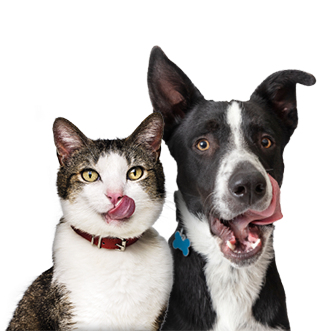
-
Find the right food for your pet
Take this quiz to see which food may be the best for your furry friend.
Find the right food for your pet
Take this quiz to see which food may be the best for your furry friend.
Featured products
 Adult 7+ Perfect Digestion Chicken, Whole Oats & Brown Rice Recipe Dog Food
Adult 7+ Perfect Digestion Chicken, Whole Oats & Brown Rice Recipe Dog FoodScience Diet's breakthrough nutrition supports ultimate digestive well-being & healthy microbiome for dogs age 7+
Shop Now Adult Healthy Cuisine Roasted Chicken, Carrots & Spinach Stew Dog Food
Adult Healthy Cuisine Roasted Chicken, Carrots & Spinach Stew Dog FoodDelicious roasted chicken paired with tender vegetables in a succulent stew
Shop Now Small & Mini Savory Stew with Chicken & Vegetables Dog Food
Small & Mini Savory Stew with Chicken & Vegetables Dog FoodA delicious complement to the nutrition of Science Diet Small & Mini 7+ dog food
Shop NowFeatured products
 Adult Savory Entrée Can Variety Pack Cat Food
Adult Savory Entrée Can Variety Pack Cat FoodPrecisely balanced nutrition with the delicious taste of savory minced chicken to help fuel the energy needs of cats during the prime of their life
Shop Now Adult 7+ Senior Vitality Chicken & Vegetable Stew Cat Food
Adult 7+ Senior Vitality Chicken & Vegetable Stew Cat FoodImproves Everyday Ability to Get Up & Go
Shop Now Adult 7+ Tender Tuna Dinner Cat Food
Adult 7+ Tender Tuna Dinner Cat FoodWith delicious chunks in a decadent gravy
Shop Now -
Dog
- Dog Tips & Articles
-
Health Category
- Weight
- Food & Environmental Sensitivities
- Urinary
- Digestive
- Joint
- Kidney
-
Life Stage
- Puppy Nutrition
- Adult Nutrition
- Senior Nutrition
Cat
- Cat Tips & Articles
-
Health Category
- Weight
- Skin & Food Sensitivities
- Urinary
- Digestive
- Kidney
-
Life Stage
- Kitten Nutrition
- Adult Nutrition
Featured articles
 Do Dogs and Cats have Belly Buttons?
Do Dogs and Cats have Belly Buttons?Learn whether cats & dogs have belly buttons like humans, what the function is, and if there are any health concerns associated with it.
Read More Does My Pet Hate Me?
Does My Pet Hate Me?Learn tips for bonding with your pet if you've ever thought, 'My dog doesn't like me, or 'Why do I have a standoffish cat?'
Read More Why Are Dogs and Cats So Cute?
Why Are Dogs and Cats So Cute?If waggy puppy dog tails and furry kitten yawns make you swoon, you're not alone. Why are cats so cute? And, dogs too! Let's find out!
Read More -


There's no way around it: Putting down a pet is one of the most difficult decisions a pet parent can make. When is it time to put your dog or cat down? As you can probably guess, there's no completely right or wrong answer. The right time will depend on multiple factors, such as your pet's quality of life, your quality of life and whether your pet has a certain health condition or ailment.
When to Put a Dog or Cat Down: Things to Consider
Though the decision is always a sad one, in some situations, putting down a pet can be the most humane choice. Remember that your veterinarian is your best resource for non-judgmental and expert advice. If you're facing the question of when to put down a dog or when is it time to put your cat down, consult your vet. Below are just some things to consider when facing this difficult decision.
Terminal Disease
One of the most obvious reasons to consider humane euthanasia is when a pet has a terminal disease, such as heart failure, cancer or another incurable condition. It's important to talk to your veterinarian about how they will manage the disease — in some cases a specialist may be necessary. Make sure to ask your veterinarian tough questions like such as whether or not the management of the disease compromises your pet's quality of life, even if it does extend it. In these cases, when your pet's health will continue to decline, helping them pass peacefully can be the last gift that you give your beloved pet.
Uncontrolled Pain or Loss of Mobility
Many pets, especially large dogs, can develop osteoarthritis — a progressive, painful degeneration of their joints. This condition can make it difficult and painful to walk, run, get up and down, jump and climb stairs. This disease can be especially distressing because dogs with osteoarthritis can be otherwise healthy in body and mind. Sometimes pet parents will wait longer to let go of their pets in these cases because it is hard to know just how much pain their pet is in.
If your pet is dealing with pain or loss of mobility that's no longer responding to treatment, talk to your vet. There might be other options or it may be time to discuss end-of-life care.

Untreatable Aggression or Behavioral Disease
Sometimes, despite pet parents' best efforts, dogs and cats can develop behavioral problems that put them, other pets and/or people in danger. Your vet may recommend humane euthanasia for safety and human health reasons. Behavioral issues in themselves are never a reason to euthanize a pet, but in cases where they cannot be corrected despite all your efforts to help, and they pose a threat to other pets or people, your veterinarian or a veterinary behaviorist is the best person to consult at this time. These cases are often especially emotionally difficult.


Tasty Tips
Young pets may need several visits in their first year for vaccinations. Adult pets generally benefit from annual check-ups, while senior or special-needs pets might require more frequent visits.
More Bad Days Than Good Days
One simple measure that you can use to help you decide when to put down a dog or cat is to determine whether your pet is having more good days or bad days. If your pet is down but still happy overall, then it's probably not time. If your pet has lost their zest for life, their appetite or doesn't enjoy any of the things they used to, then it's time to either enlist veterinary intervention or discuss end-of-life care.
If you're struggling to tell whether it's the right time or what constitutes a good day or bad day, consider using a quality of life scoring chart like the one from Lap of Love Veterinary Hospice.
When Not to Put a Pet Down
Although it's less common these days, some people have euthanized dogs and cats because they no longer fit with their plans or because they have to move and can't take their pets with them.
But unless your pet's quality of life will be significantly impacted or your pet has health issues that make them a poor candidate for adoption — such as terminal cancer or end-stage osteoarthritis — this isn't a good reason to end a life. Being a responsible pet parent includes committing to care for your pet throughout their lifetime or finding them another home if you're no longer able to care for them. If you feel that you are no longer able to provide the best care for your aging pet, consider finding an alternative solution to euthanasia. There are also a number of end-of-life hospice care facilities throughout the country that you can contact to see if your pet is a good candidate to bring there. Reach out to social groups or talk to your veterinarian to see if they know anyone that might consider caring for your pet.
If you're tasked with deciding when to put down a dog or cat, know that it won't be easy. Plan ahead, trust yourself and know that there is no right decision , but it's your job to know what is best for your pet. You need to consider their quality of life and whether they are suffering. Even though it may be hard to let go, if your pet no longer has a high quality of life and is suffering that should play a heavy factor in your decision.


Dr. Sarah Wooten graduated from UC Davis School of Veterinary Medicine in 2002. A member of the American Society of Veterinary Journalists, Dr. Wooten divides her professional time between small animal practice in Greeley, Colorado, public speaking on associate issues, leadership, and client communication, and writing. She enjoys camping with her family, skiing, SCUBA, and participating in triathlons.
Related products
Related articles

Check out our list of pet-friendly U.S. cities that are excellent travel options, offering off-leash dog parks and pet-friendly restaurants & hotels.

Learn about veterinary dental care for your pet, including deep teeth cleaning procedures, which can help your dog or cat maintain proper dental health.

Learn the ins and outs of a televet appointment before you talk to a vet online.

Crystals in your pet's urine can be common, but can also indicate a deeper health concern. Learn about the different types of crystals & what they mean.

Put your pet on a diet without them knowing
Our low calorie formula helps you control your pet's weight. It's packed with high-quality protein for building lean muscles, and made with purposeful ingredients for a flavorful, nutritious meal. Clinically proven antioxidants, Vitamin C+E, help promote a healthy immune system.
Put your pet on a diet without them knowing
Our low calorie formula helps you control your pet's weight. It's packed with high-quality protein for building lean muscles, and made with purposeful ingredients for a flavorful, nutritious meal. Clinically proven antioxidants, Vitamin C+E, help promote a healthy immune system.

